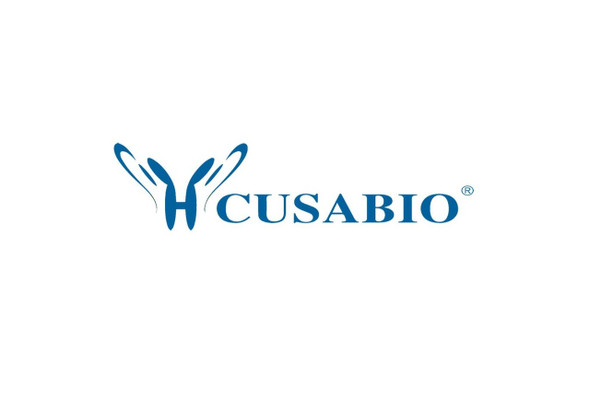Cusabio Human Recombinants
Recombinant Human Fibroblast growth factor 13 (FGF13) | CSB-EP008619HU
- SKU:
- CSB-EP008619HU
- Availability:
- 13 - 23 Working Days
Description
Recombinant Human Fibroblast growth factor 13 (FGF13) | CSB-EP008619HU | Cusabio
Alternative Name(s): Fibroblast growth factor homologous factor 2 Short name: FHF-2
Gene Names: FGF13
Research Areas: Signal Transduction
Organism: Homo sapiens (Human)
AA Sequence: MAAAIASSLIRQKRQAREREKSNACKCVSSPSKGKTSCDKNKLNVFSRVKLFGSKKRRRRRPEPQLKGIVTKLYSRQGYHLQLQADGTIDGTKDEDSTYTLFNLIPVGLRVVAIQGVQTKLYLAMNSEGYLYTSELFTPECKFKESVFENYYVTYSSMIYRQQQSGRGWYLGLNKEGEIMKGNHVKKNKPAAHFLPKPLKVAMYKEPSLHDLTEFSRSGSGTPTKSRSVSGVLNGGKSMSHNEST
Source: E.coli
Tag Info: N-terminal 6xHis-tagged
Expression Region: 1-245aa
Sequence Info: Full Length
MW: 31.6 kDa
Purity: Greater than 90% as determined by SDS-PAGE.
Relevance: Microtubule-binding protein which directly binds tubulin and is involved in both polymerization and stabilization of microtubules. Through its action on microtubules, may participate to the refinement of axons by negatively regulating axonal and leading processes branching. Plays a crucial role in neuron polarization and migration in the cerebral cortex and the hippocampus. May regulate voltage-gated sodium channels transport and function. May also play a role in MAPK signaling.
Reference: "Fibroblast growth factor (FGF) homologous factors: new members of the FGF family implicated in nervous system development."Smallwood P.M., Munoz-Sanjuan I., Tong P., Macke J.P., Hendry S.H., Gilbert D.J., Copeland N.G., Jenkins N.A., Nathans J.Proc. Natl. Acad. Sci. U.S.A. 93:9850-9857(1996)
Storage: The shelf life is related to many factors, storage state, buffer ingredients, storage temperature and the stability of the protein itself. Generally, the shelf life of liquid form is 6 months at -20?/-80?. The shelf life of lyophilized form is 12 months at -20?/-80?.
Notes: Repeated freezing and thawing is not recommended. Store working aliquots at 4? for up to one week.
Function: Microtubule-binding protein which directly binds tubulin and is involved in both polymerization and stabilization of microtubules. Through its action on microtubules, may participate to the refinement of axons by negatively regulating axonal and leading processes branching. Plays a crucial role in neuron polarization and migration in the cerebral cortex and the hippocampus.
Involvement in disease:
Subcellular Location: Cell projection, filopodium, Cell projection, growth cone, Cell projection, dendrite, Nucleus, Cytoplasm
Protein Families: Heparin-binding growth factors family
Tissue Specificity: Ubiquitously expressed. Predominantly expressed in the nervous system.
Paythway:
Form: Liquid or Lyophilized powder
Buffer: If the delivery form is liquid, the default storage buffer is Tris/PBS-based buffer, 5%-50% glycerol. If the delivery form is lyophilized powder, the buffer before lyophilization is Tris/PBS-based buffer, 6% Trehalose, pH 8.0.
Reconstitution: We recommend that this vial be briefly centrifuged prior to opening to bring the contents to the bottom. Please reconstitute protein in deionized sterile water to a concentration of 0.1-1.0 mg/mL.We recommend to add 5-50% of glycerol (final concentration) and aliquot for long-term storage at -20?/-80?. Our default final concentration of glycerol is 50%. Customers could use it as reference.
Uniprot ID: Q92913
HGNC Database Link: HGNC
UniGene Database Link: UniGene
KEGG Database Link: KEGG
STRING Database Link: STRING
OMIM Database Link: OMIM









